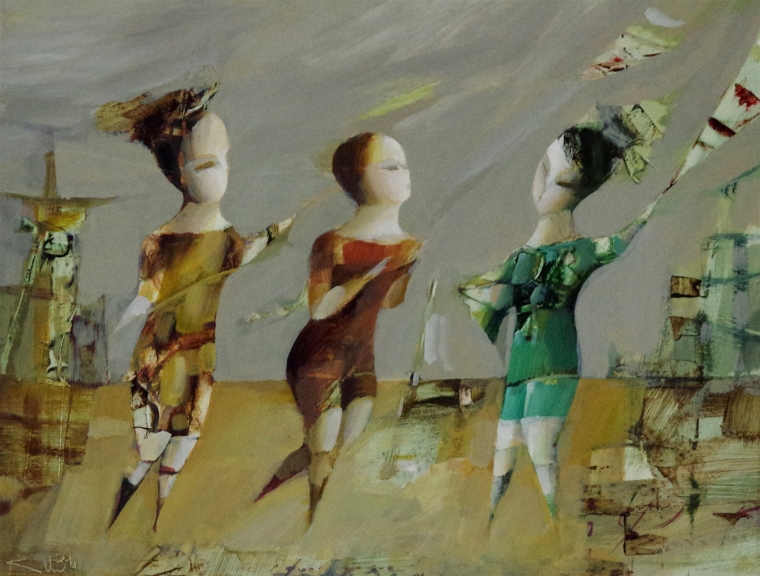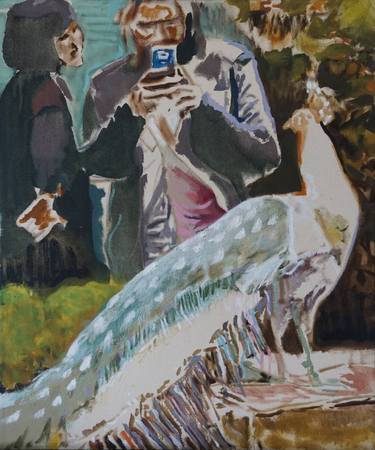Introducing the Keys Behind Meaningful Figurative Oil Painting Styles
The Development of Figurative Oil Painting: Comprehending Its Historical Relevance and Modern Interpretations
The advancement of figurative oil painting functions as an engaging lens with which to examine the interplay in between imaginative expression and historic context. From the thorough naturalism of the Renaissance to the stirring power of the Baroque, each age has actually added layers of meaning and strategy to this ageless tool. Contemporary artists, attracting from this rich heritage, are currently reinterpreting the human figure in ways that challenge conventional stories. As we explore these improvements, one have to think about exactly how the dialogue between present and past informs not just creative technique yet likewise social reflections in an increasingly complex world.
Beginnings of Figurative Oil Paint
The beginnings of figurative oil paint can be mapped back to the very early Renaissance in Europe, especially in the 15th century. This duration marked a substantial departure from the level representations and rigid forms characteristic of middle ages art. Musicians started to discover naturalism, emphasizing the human figure and its psychological expression. The growth of oil paint allowed for greater deepness of color and information, enhancing the realistic look and vibrancy of their job.

In this transformative era, figures were commonly shown within contextually abundant settings, showcasing not only their physical attributes but also their mental states. Leaders such as Jan van Eyck and Titian utilized the tool's versatility, utilizing layering strategies to attain luminance and texture. This advancement helped with the portrayal of elaborate fabrics and the nuances of complexion, adding to the growth of portraiture and narrative scenes.
Additionally, the Renaissance focus on humanism cultivated a recognition for uniqueness, which consequently influenced artists to produce even more relatable and vibrant figures - figurative oil painting. Therefore, figurative oil painting emerged as an effective vehicle for storytelling and emotional interaction, laying the groundwork for future creative movements and designs
Key Historic Motions
Significant historic motions have formed the development of figurative oil paint, each contributing unique viewpoints and strategies that increased the medium's possibilities. The Renaissance noted a turning point, emphasizing realism and the human type, with musicians like Leonardo da Vinci and Michelangelo pressing the boundaries of physiological precision and perspective. Following this, the Baroque period brought remarkable contrasts of light and darkness, exhibited by Caravaggio, that infused spiritual themes with extreme emotionality.
The 19th century introduced Romanticism and Realistic look, where musicians such as Delacroix and Courbet challenged classic suitables, concentrating on individual expression and daily life. The introduction of Impressionism additionally changed the medium by emphasizing the results of light and shade, bring about a separation from typical representation.
In the early 20th century, motions like Expressionism and Cubism redefined metaphorical painting with abstraction and the exploration of emotional deepness. Each of these movements not just showed the societal changes of their times but additionally prepared for contemporary analyses. The interplay between these historic movements has actually produced a rich tapestry of designs and viewpoints, affecting contemporary musicians in their quest of recording the human experience on canvas.
Techniques and Materials Development

Throughout the Baroque duration, techniques such as chiaroscuro and sfumato arised, boosting the psychological vibration of figurative compositions. Artists started to trying out glazes and impasto, adjusting appearance and brightness. By the 19th century, technologies like making use of pre-mixed paints in tubes transformed accessibility, permitting musicians to paint en plein air and capture the short lived results of light.
The 20th century experienced the introduction of synthetic pigments and tools, which broadened the scheme and altered the consistency of oil paints. The exploration of brand-new application methods, such as palette knives and brushes of differing stiffness, more diversified artistic expression. Jointly, these innovations show the developing partnership between products, techniques, and the creative vision fundamental in figurative oil painting.

Contemporary Analyses
Contemporary analyses of metaphorical oil paint mirror a vibrant discussion in between practice and technology, where musicians test developed standards and check out diverse styles. This development materializes in different methods, as contemporary musicians mix timeless methods with contemporary ideas, typically attending to social, political, and personal narratives.
Many practitioners attract ideas from historic works, yet they infuse their items with modern point of views, using the human form as a vehicle for discourse on culture, sex, and identification. Artists increasingly experiment with abstraction, distortion, and combined media, which enables for a wider interpretation of the number and its context.
Additionally, the use of vivid color palettes and unusual structures frequently offers to interrupt conventional watching experiences, provoking critical involvement from audiences. This change in focus expands beyond aesthetics; it mirrors a growing recognition of the complexities of human experience in an interconnected globe.
As figurative oil paint continues to progress, it remains a crucial medium for discovering the nuances of modern life, embodying both a regard for heritage and a dedication to progressive idea. The result is a rich tapestry of expression that reverberates with the complexities of the contemporary human problem.
Effect On Modern Art
The impact of figurative oil painting on contemporary art is extensive, as it has constantly influenced a myriad of imaginative movements and practices throughout the 20th and 21st centuries. From Expressionism to Surrealism and past, the expedition of the human figure has stayed a central style, permitting musicians to convey complex emotions and narratives. This emphasis on figurative depiction has actually brought about a re-examination of typical methods, resulting in cutting-edge techniques that blend realism with abstraction.
Furthermore, contemporary artists have actually welcomed metaphorical oil painting as a way to address social and political issues, utilizing the medium to challenge perceptions of gender, identity, and culture. The renewal of rate of interest in figurative work in recent years mirrors a wishing for link in a significantly electronic world, where human experience and emotion are paramount.
In addition, the discussion between figurative oil paint and modern-day art is obvious in the works of artists such as Kehinde Wiley and Jenny Saville, that draw on historical referrals while instilling their pieces with contemporary importance. description Eventually, figurative oil paint proceeds to shape and redefine modern-day imaginative expression, highlighting its enduring value in the art world.
Conclusion
The advancement of metaphorical oil painting emphasizes internet its historic significance and flexibility across various imaginative motions. From the naturalism of the Renaissance to the stirring expressions of the Baroque and the ingenious methods of modernity, this tool has continually changed. Contemporary interpretations mirror unconventional make-ups and lively colors, promoting vital engagement with political and social themes. Eventually, figurative oil paint stays an important tool for checking out the human experience, resonating exceptionally in today's digital landscape.
The advancement of figurative oil painting offers as a compelling lens with which to analyze the interaction in between artistic expression and historical context.Substantial historic movements have formed the evolution of figurative oil paint, each adding distinct viewpoints and methods that increased the medium's possibilities.As historic activities formed the trajectory of metaphorical oil paint, the products and techniques utilized by musicians have likewise undertaken significant changes. figurative oil painting.The effect of figurative oil painting on modern-day art is extensive, as it has continuously influenced a myriad of artistic movements and practices throughout the 20th and 21st centuries.The evolution of metaphorical oil paint emphasizes its historic value and flexibility throughout numerous creative motions